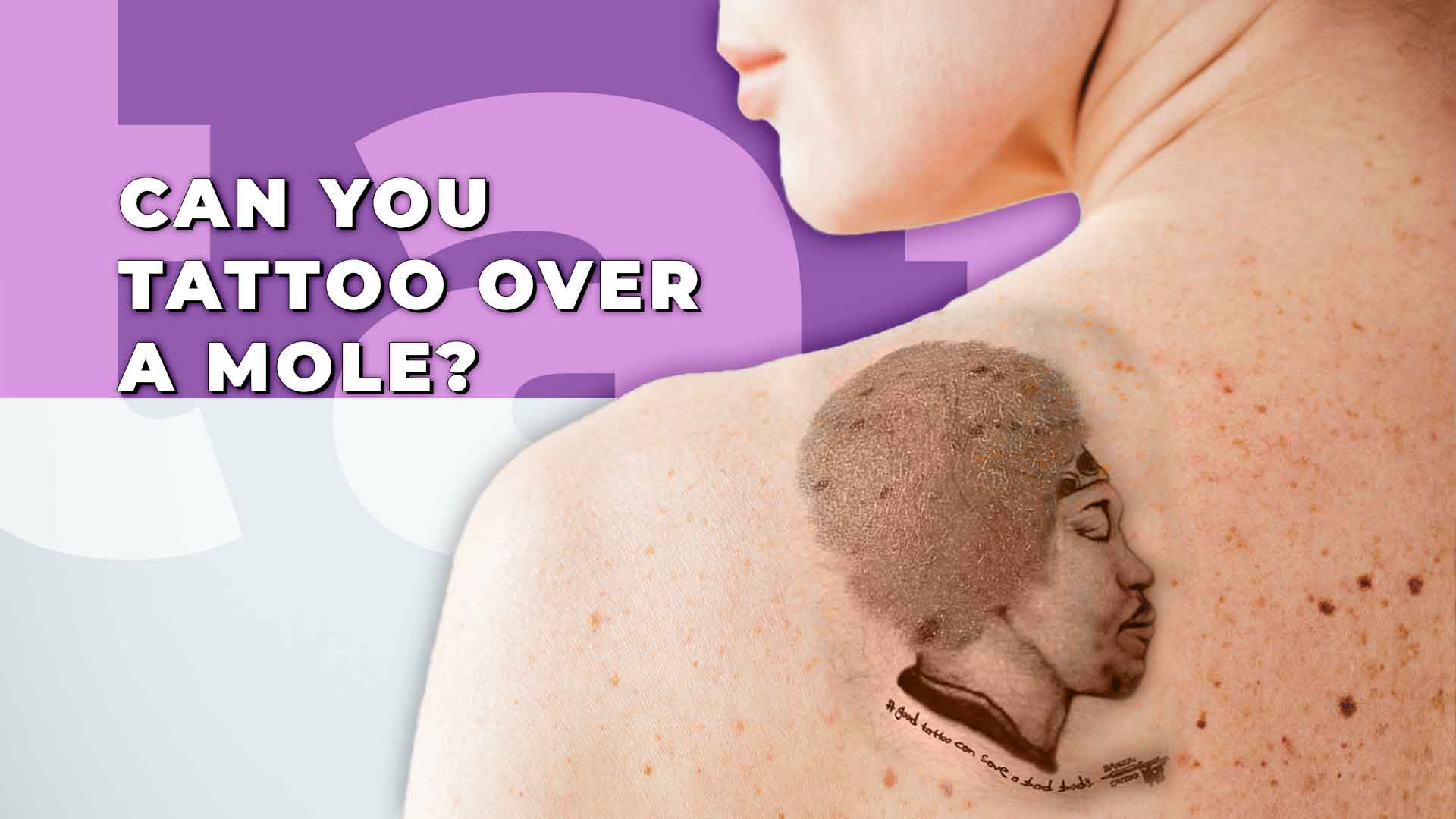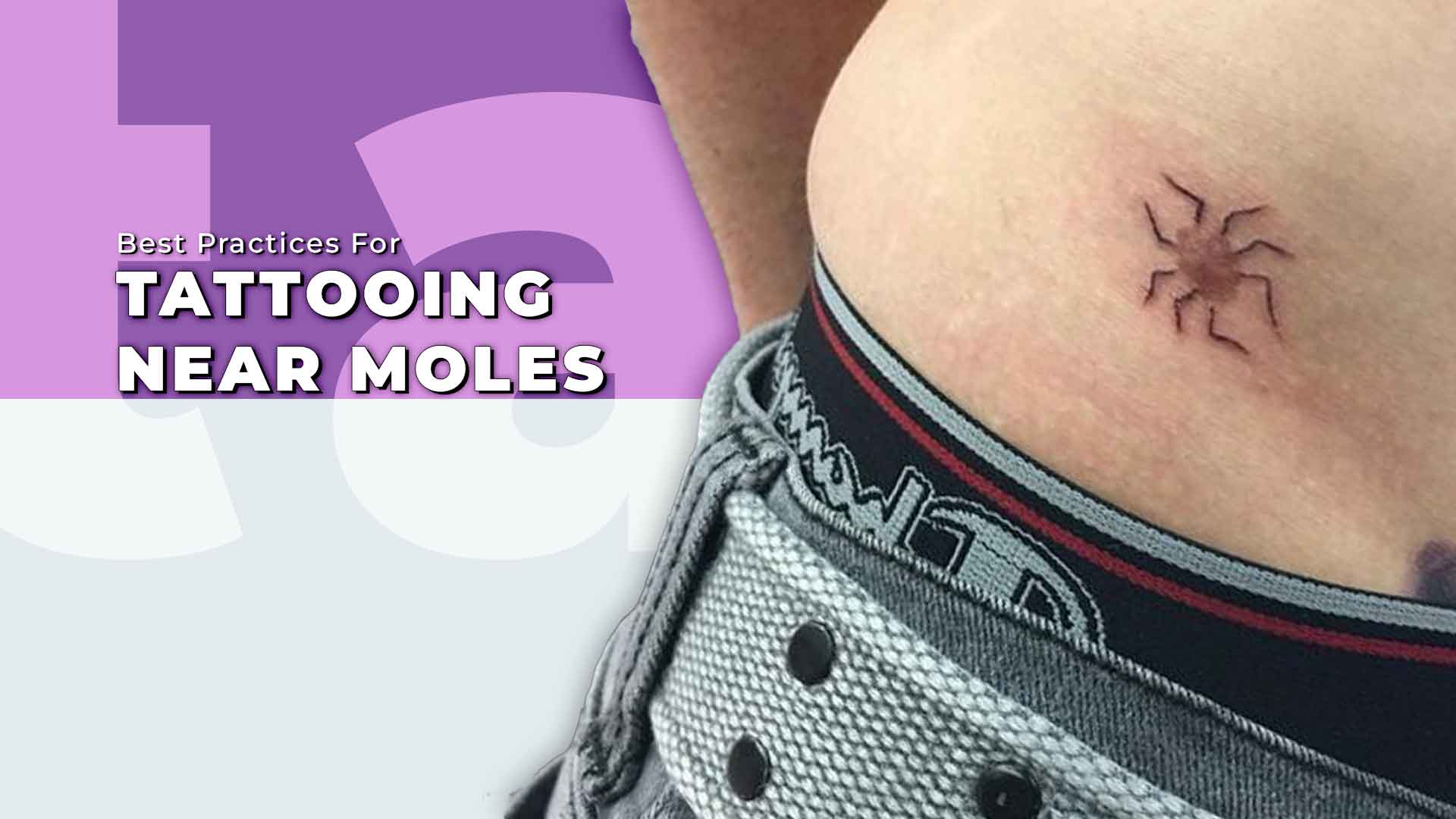Tattooing around a mole is a potential option for those who want to avoid the risks associated with tattooing over a mole. However, even tattooing around a mole can pose some risks, particularly if the mole is not monitored for any changes in its appearance. Taking precautions to minimize these risks is essential, such as consulting with a dermatologist and communicating with your tattoo artist. Additionally, alternative options such as covering the mole with makeup or clothing or removing the mole surgically may be worth considering. Ultimately, weighing the potential risks and alternatives before deciding to get a tattoo near a mole is essential.
Moles are common on most individuals’ skin and can be found in areas where people may want to get tattoos. Tattooing over moles is a controversial topic, as it involves the risk of potentially causing harm to the skin. Moles are clusters of pigmented cells on the skin’s surface; if they are not monitored correctly, they can develop into skin cancer. As a result, many people may wonder if it’s possible to get a tattoo around a mole instead. This article will discuss whether tattooing around a mole is a safe option and what precautions you should take to minimize any potential risks. We will also explore alternative options for covering or removing moles and best practices for tattooing near moles.
Can You Tattoo Over A Mole?

Tattooing over a mole is generally not recommended because of the potential risks. Moles are clusters of pigmented cells, and if they are not monitored correctly, they can develop into skin cancer. Tattooing over a mole can make monitoring any changes or abnormalities in the mole’s appearance challenging.
One significant risk of tattooing over a mole is the possibility of skin cancer development. When a mole changes in appearance, it can be a sign of melanoma, a type of skin cancer that can be life-threatening if left untreated. Tattooing over a mole can make monitoring any changes in the mole’s appearance more challenging, which can delay the diagnosis and treatment of skin cancer.
Possible complications during the tattooing process are another risk factor to consider. Moles can be raised or uneven, and tattooing over them can result in an uneven or bumpy tattoo. The tattoo ink can also obscure the mole, making it more challenging to monitor for any changes in its appearance. Additionally, tattooing over a mole can cause bleeding, pain, and scarring, complicating healing.
Consulting with a dermatologist before getting a tattoo over a mole is essential to ensure the procedure’s safety. A dermatologist can examine the mole and determine if it is safe to tattoo over it. They can also monitor the mole’s appearance in the future to ensure that it does not change in a way that could indicate skin cancer.
What Happens If You Tattoo Around A Mole?
Tattooing around a mole is a relatively safe option than tattooing directly over it. If the mole is benign, meaning non-cancerous, getting a tattoo around it may not pose significant risks to your health. Tattooing near the mole, instead of directly over it, is a safer alternative as it minimizes the risk of damaging the mole or affecting its appearance. However, it’s important to remember that even if the tattoo is not placed directly over the mole, the proximity of the tattoo to the mole can still affect its appearance.
After getting a tattoo around a mole, monitoring its appearance is crucial. If the mole changes in size, shape, or color, it could be a sign of skin cancer. Changes in the mole could also affect the appearance of the tattoo, making it appear distorted or uneven. Therefore, you must consult with a dermatologist as soon as possible if you notice any changes in the mole’s appearance after getting a tattoo around it.
If the mole is cancerous or has the potential to develop into skin cancer, getting a tattoo around it may not be advisable. In such cases, a dermatologist may recommend surgical mole removal before getting a tattoo. Removing the mole ensures that the tattoo artist has a clear and safe area to work on, eliminating the risk of further complications.
Alternatives To Tattooing Over Moles

There are alternatives to tattooing over moles that can cover or remove them. One option is to cover the mole with makeup or clothing. For example, one can use makeup to conceal the mole on the face or neck, while clothing can cover moles on other body parts. These methods can be effective for cosmetic purposes, but they do not address potential health concerns related to the mole.
Another option is to remove the mole surgically. If the mole is cancerous or has the potential to develop into skin cancer, surgical removal is often the recommended course of action. Even if the mole is not cancerous, surgical removal may be an option for cosmetic purposes. However, it’s essential to consult a dermatologist before removing a mole to ensure it’s done safely and correctly.
Best Practices For Tattooing Near Moles

Tattooing near moles requires proper care and attention to minimize the risks of complications. Here are some best practices to follow when getting a tattoo near a mole:
- Consult with a dermatologist: Before getting a tattoo near a mole, it’s essential to consult with a dermatologist to ensure that it’s safe. The dermatologist can assess the mole’s location, size, and appearance to determine if there are any potential risks involved in getting a tattoo near it.
- Communicate with the tattoo artist: It’s essential to communicate with the artist about the mole’s location and appearance before getting a tattoo. The tattoo artist can take precautions to avoid tattooing directly over the mole, such as adjusting the design or placement of the tattoo.
- Take care of the tattooed area: After getting a tattoo near a mole, it’s crucial to take proper care of the tattooed area. Follow the aftercare instructions provided by the tattoo artist, including cleaning the area regularly and avoiding activities that could cause the area to become infected or irritated.
- Monitor the mole’s appearance: It’s essential to monitor the mole’s appearance after getting a tattoo near it. If the mole changes in size, shape, or color, it could be a sign of skin cancer. If you notice any changes, consult with a dermatologist as soon as possible.
- Consider regular skin checks: If you have moles or a family history of skin cancer, consider getting regular skin checks with a dermatologist. This can help detect potential issues early on and ensure proper monitoring of moles near tattoos.
The Final Thought

Tattooing over moles can pose potential risks, including developing skin cancer and complications during tattooing. Therefore, it’s crucial to consider alternatives such as covering the mole with makeup or clothing or surgically removing it. Suppose you decide to proceed with getting a tattoo near a mole. In that case, it’s essential to consult with a dermatologist and communicate with the tattoo artist to minimize the risks of complications. Proper aftercare and monitoring of the mole’s appearance are also crucial to ensure the tattoo does not affect the mole’s health.

